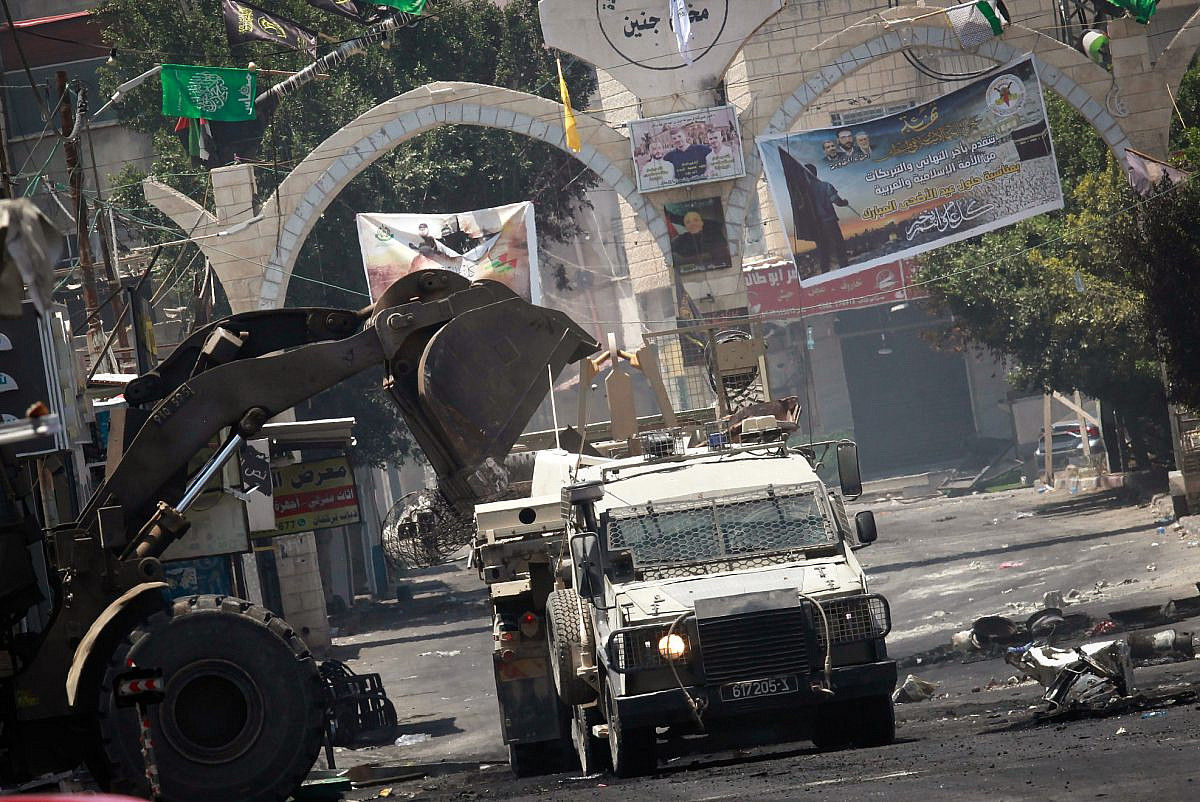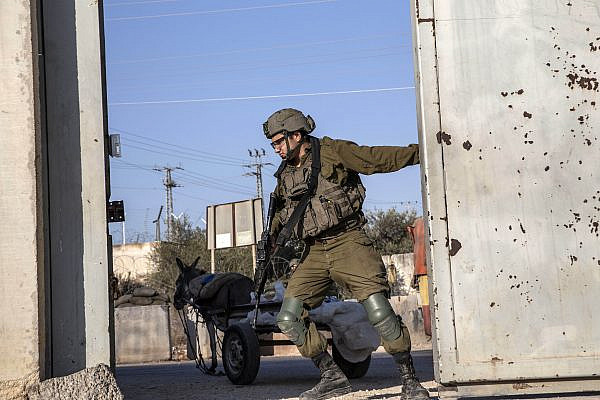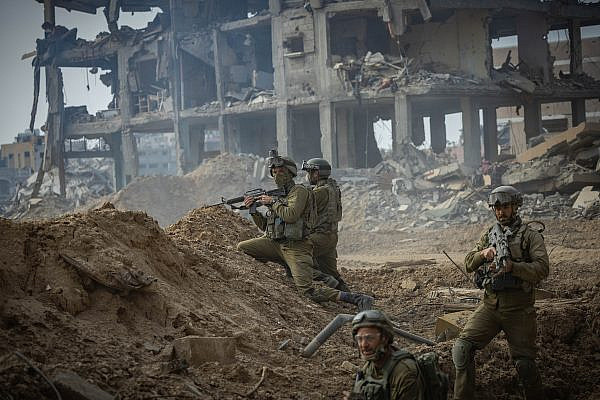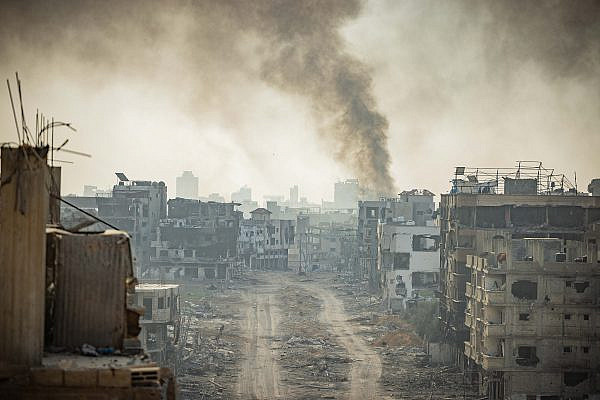Israel’s destructive two-day invasion of Jenin refugee camp in early July offered further proof that the state is aiming to eliminate the social and urban structure of such Palestinian camps across the occupied West Bank. This forms part of a far-reaching strategic plan to put an end to the “problem” of Palestinian refugees — both those living inside their homeland, and those living in the diaspora in Arab countries and around the world.
This Israeli policy is not new. A straight line can be drawn from the destruction of the Jabaliya refugee camp in Gaza after 1967, to the massacre in Sabra and Shatila during the Lebanon War in 1982, through to Israel’s reoccupation of the Jenin camp 20 years later during the Second Intifada. Yet over the past year and a half, this ambition has become a military priority, with Israel’s army raiding the camps in Jenin and Nablus on an almost weekly basis, as part of what it calls “Operation Break the Wave.”
In the eyes of the occupation, refugee camps in the West Bank — including those in Jenin, Nablus, Jericho, Ramallah, Bethlehem, and Hebron — are where the momentum of Palestinian resistance to military rule and resulting settlements grows. Indeed, for as long as they have existed, the camps have provided shelter and a supportive environment for resistance organizations to plan and organize.
Israel has a clear interest in abolishing any special status of the refugee camps, and wants to redesign them in such a way that will serve the free movement of its war and occupation machine. From here derives the policy of destroying rows of houses and the narrow alleys between them, preventing access between homes and altering the social fabric of the camps.
The unceasing attacks on the UN Relief and Works Agency (UNRWA), which provides services specifically for Palestinian refugees, also forms part of the policy to eliminate the problem of the refugees. This campaign reached its peak under the Trump administration, when the White House cut all funding to the agency. With President Joe Biden restoring U.S. aid, Israel has escalated its war on the camps to a new level.
From Kufr Qasem to Jenin
During the recent Jenin invasion, we saw how the Israeli army displaced thousands of residents from their homes, creating scenes reminiscent of the Nakba of 1948. Israel has always believed that a state of war can be used to try and deport Palestinians, and the Kufr Qasem massacre provides a clear example.
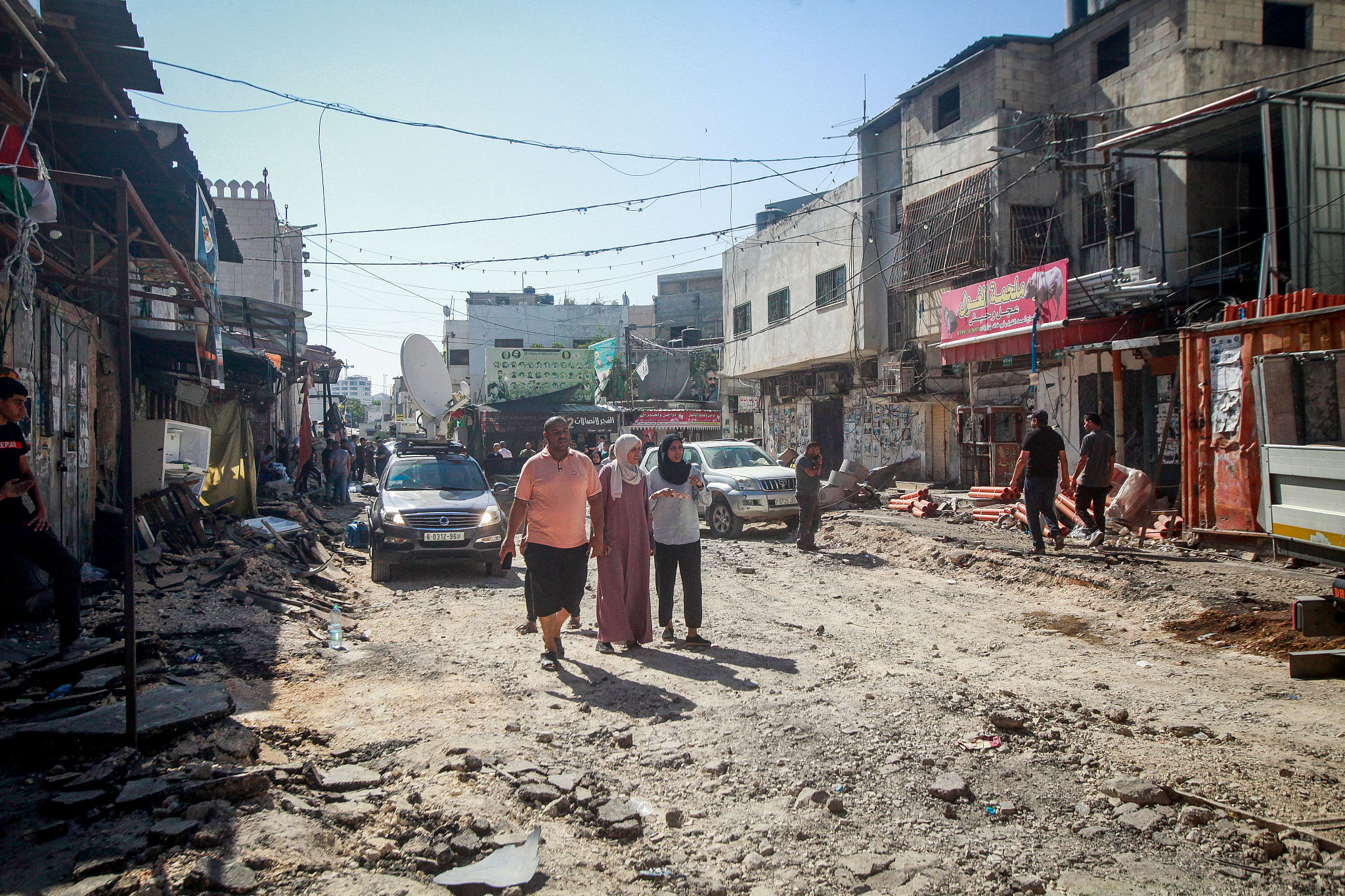
In 1956, while Israeli troops invaded Egypt alongside France and Britain during the Sinai War, Israeli forces shot dead 49 Palestinian citizens in Kufr Qasem. The massacre was an attempt by Israel’s leadership at the time to “correct the mistake” of 1948, when it left around 150,000 Palestinians inside the borders of the newly formed state. With the Sinai War as a distraction, it sought to carry out a mass deportation of Palestinian citizens by frightening them to the point that they would leave voluntarily. The attempt failed, but Israel’s efforts to “correct the mistake” have never ceased.
In Jenin, the occupation treated the camp and its civilian population as a testing ground for some of its most innovative military technology. Yet having learned from the army’s previous incursions, the Palestinians succeeded in not only preventing Israel’s surveillance from locating the fighters, but also blocking the army from setting the terms of battle — to the point that Israeli Defense Minister Yoav Gallant expressed his concern about the low number of Palestinian fighters who were killed.
Prime Minister Benjamin Netanyahu stated that if the “terrorists” return to the Jenin camp, then so too will the army. Yet the Palestinians also feel that the resistance has been able to thwart the government’s plans to resettle the northern West Bank — particularly the areas where settlements were dismantled as part of the 2005 Gaza disengagement — because Israelis will not feel safe there in light of the activity of armed groups.
Most read on +972
Thus, under the current government, Israel is entering a new stage in its war on the camps. Through the judicial overhaul, the far right is aiming to remove all procedural and legal obstacles in the way of its goal of mass ethnic cleansing. Indeed, although the struggle appears to be an internal Israeli one, its consequences will be felt first and foremost by the Palestinians, whose “treatment” constitutes the real agenda of the ruling coalition.
With their stubborn resistance to the occupation continuing to grow, the refugee camps are once again becoming the nexus of Israel’s oppression. What we saw in Jenin is likely only the beginning.

